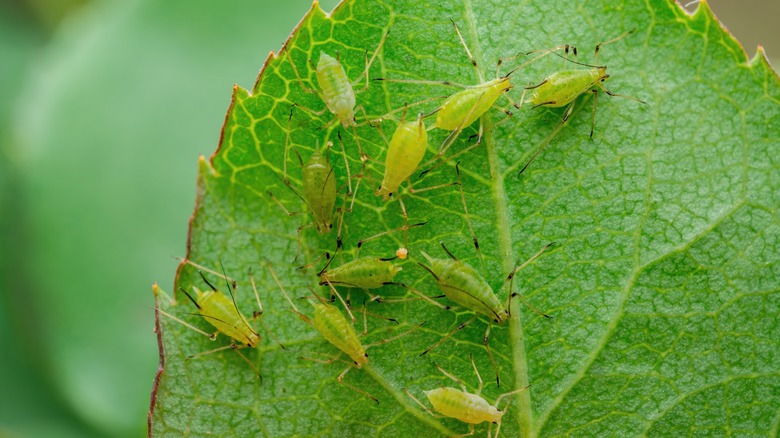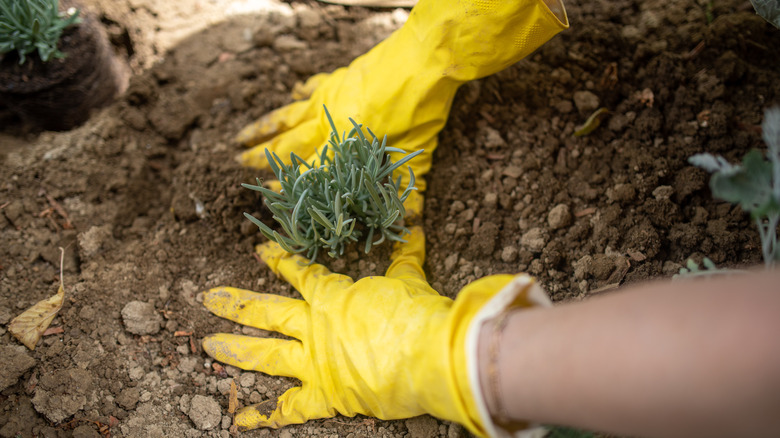The Simple Planting Technique That Will Prevent Pests From Eating Your Garden
It seems like insects and pests find their way into any space that needs to be preserved. From causing damage to our household to lurking in our gutters, there's almost no place that can be totally protected against a pest infestation. With our gardens, though, the stakes are even higher. Pests are quick to nibble on our newly grown plants, flowers, and trees, physically rejecting the effort we put into growing them.
Thankfully, one planting technique has seemed to help ward off pests — or, at the very least, intimidate them. The surprising answer? Letting the surrounding grass and shrubs overgrow.
Believe it or not, small critters are attracted to gardens that are neatly manicured and kept clean. Since larger insects and animals use their size to prey on these insects, a trimmed garden with clean-cut edges can appear as a safe place to land. With overgrown gardens, on the other hand, things like snakes, bees, and even humans become a threat to pests because of their ability to hide (and seek) within the grass. Although most home design advice won't encourage you to be messy, the same doesn't apply to our gardens. Instead, it's time to let some plants grow the way they want to.
Planting to keep pests at bay
In addition to tall grass warding off small insects, it also gives them something to chew on before leaving your garden alone. Allowing tall plants to grow around the borders and edges of your garden, especially generic plants that don't hold much value can fill insects up before they make their way to your treasured plants and flowers. Incorporating strongly-scented plants — such as lavender, rose, or jasmine — can deter insects all together. You'll want to create a few rings of plants, from least valuable to most, to ensure an obstacle course for any stubborn pests that try to enter.
When it comes to tall and strongly-scented plants, mint is another effective way to ward off bugs. However, mint must be contained since its ability to grow quickly and vastly can cause problems for your garden. Instead, consider using a jar to grow mint and placing the jars around the outside of your garden. Menthol, a property found in mint, is often used as a key ingredient in many pesticides, which will cause a natural decrease in insect visitors. It's also great for keeping mice away!
Companion planting flowers and vegetables is the other key to success
Besides growing your surrounding plants strong and tall to achieve that messy effect, there are a few other ways to protect your garden. For example, companion planting—an old practice that encourages gardeners to grow similar plants together—will enhance their nutrition while naturally repelling insects. Flowers like marigolds have bug-repellent qualities, killing harmful insects while encouraging their own growth by attracting pollinators. Lavender, which is also known for repelling insects like mosquitoes, can be accompanied by another plant in its growth. If you're prone to growing more vegetables than flowers, you're in luck—they're natural pest repellents.
Insect-repelling companion plants, such as basil and tomato or chives and onions, are a great way to grow vegetables without risking damage from garden pests. Basil, for example, has been successful in protecting tomatoes from hornworms that damage and consume tomatoes before they've grown to full form. Ultimately, the decision to crowd your garden with a planted "mess" will deter pests from encroaching on your property, whether that's through tall, strong-scented, or companion plants.


